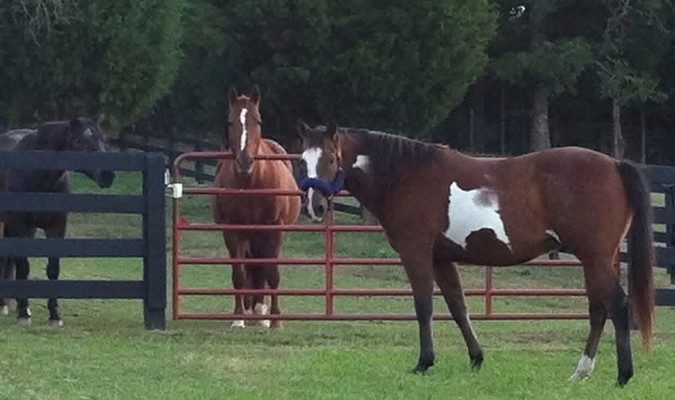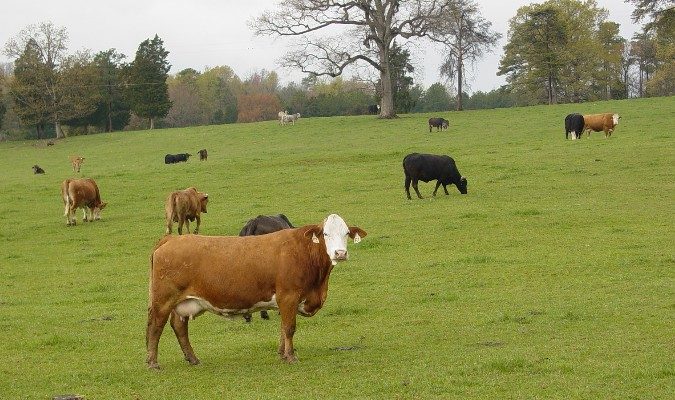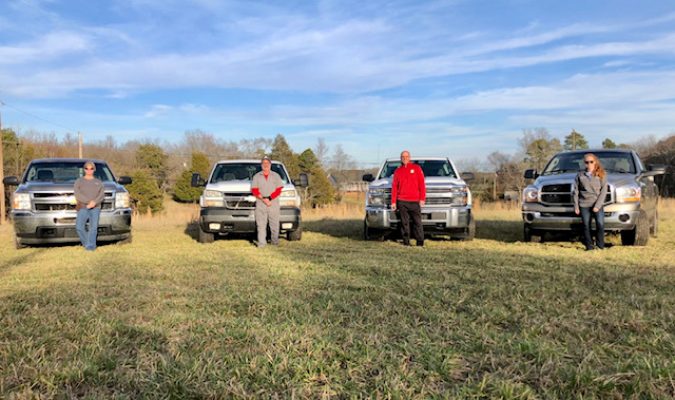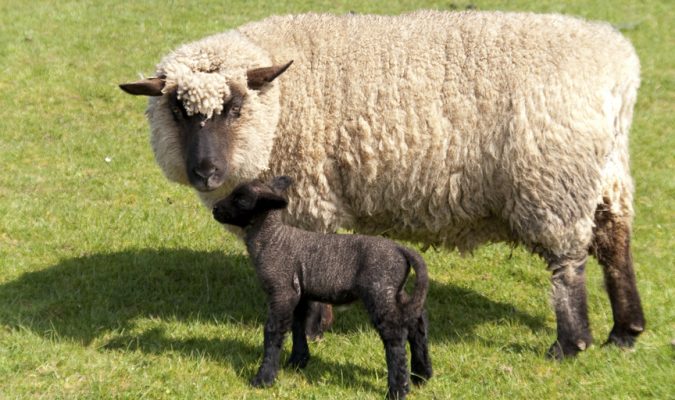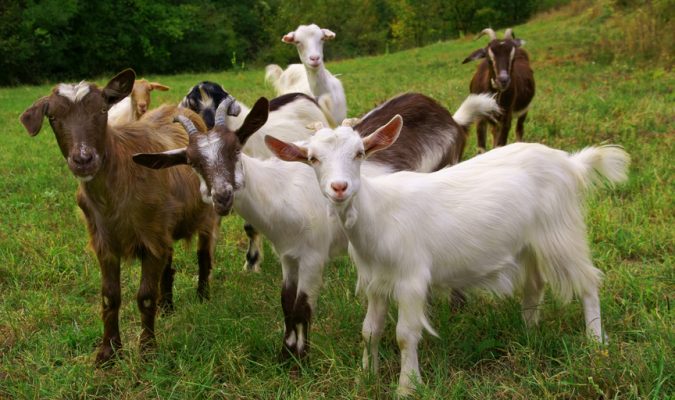The Threat of Armyworms
It’s the start of another wonderful month, and the team at Rocky River hopes you enjoyed your much deserved Labor Day weekend. We realize the recent threat of armyworms made this year’s hay season unfortunately come to an abrupt ending. This month’s newsletter is directed towards some tips to mitigate the annual nuisance of armyworms and to ensure all the hard work put into baling the hay is worthwhile for your operation.
Unfortunately, armyworms have struck the Carolinas early this year and have wreaked havoc on lawns and pastures around the Charlotte area. The abnormally early and prolific armyworm infestation this year is likely due to the increased precipitation this summer through the months of July and August, which creates a great environment for the pest. The rapid and unexpected infestations lead to last minute insecticide treatments that usually have limited success. Armyworms typically emerge from moth eggs in the middle of summer. One moth can roughly lay 1,000 eggs to be hatched in under 10 days. The larvae will hatch and then drop to the soil for food where they begin to grow and destroy foliage almost overnight. Then by the time you note the characteristic brown patches in your lawn or pasture, an infestation is already underway.
Like most things, an ounce of prevention is worth a pound of cure when it comes to armyworms. We advise using oil or chemical pesticides to create undesirable environments for the armyworms before the larvae hatch. These pesticide treatments work best on small larvae rather than their larger counterparts. For specific recommendations on pesticides to use on your operation and timing, please contact your local county extension office. It should be stated that if you are unable to get the equipment needed to treat your pastures or you’re already in the middle of an infestation, your best bet is to cut the hay so long as weather is favorable. Below are some additional resources on armyworms.
https://www.turffiles.ncsu.edu/insects/fall-armyworm-in-turf/
https://www.aces.edu/blog/topics/farming/management-of-fall-armyworm-in-pastures-and-hayfields/
https://extension.msstate.edu/publications/fall-armyworms-hayfields-and-pastures
The Value of Hay Testing
With summer coming to an end, your hay season is also coming to an end. However you preserve your hay – whether round bales, square bales, or even the big square bales – it’s good to know the quality of the hay. This can allow you to sort your hay according to the highest nutrition content. Sorting your hay in this manner can allow you to utilize the best value hay during the harshest time of the year when your animals need it most. Also, depending on your animals’ expected calving or foaling dates you can plan to save the best hay for that last trimester of gestation when the fetus is tripling in size and the dam is preparing the colostrum.
The appearance of the hay might tell part of the story about the nutrition quality, but it surely doesn’t tell the entire story. We recommend sending a hay sample off to get it tested through your local county extension agency. With the low cost of $10 a sample, it’s quite a bargain for the peace of mind to know you’re feeding your animals what they need all year round. We highly recommend that if you feed hay to your livestock, you should have your hay tested annually. Even if your pastures have had roughly the same nutrition analysis in years prior, that doesn’t mean it will be the same this year. The weather is different every year and the time you cut your hay is different every year, so your hay test will likely also be different from year to year.
To collect a hay analysis you first want to group your hay into sections based on hay from the same field and same cutting. Then by using a hay core sampler (rentable from local extension office) take samples from ~10 bales and fill a gallon sized bag with your pooled sample. A hay analysis can tell you things such as moisture content, protein, fiber, minerals, and digestibility. You can also test for potential toxins that might be present in your forage, such as nitrates and mycotoxins at no additional charge. After you get your results your local extension agent can help you understand the results and develop a feeding recommendation based on your operation and goals. Below are some additional resources to help you submit a hay sample for your operation.
https://avery.ces.ncsu.edu/wp-content/uploads/2020/08/MichelleSouthHayTesting.pdf?fwd=no
https://forsyth.ces.ncsu.edu/2020/07/forage-and-feed-testing-form-now-online/
Storing Your Hay
After the hard work of cutting your hay and getting a hay analysis, we want to ensure its value is maintained for as long as possible through storing the hay appropriately. When it comes to storing bales the main factors that damage the hay are time, moisture, and temperature. The more time you store your hay before use, the less nutrition left available. Hay stored for 12-18 months will have up to twice as much nutritive loss compared to hay stored for 9 months. The more heat and moisture your hay is exposed to, the greater the loss of hay quality. This is because the bacteria and mold that grow in the hay bale during warm and moist conditions are what cause the nutrient loss. So, it’s the hay that is cut early in the season that will be subject to more moisture and heat throughout the summer and will likely have greater nutritive losses than hay cut late in the season.
For bales that aren’t plastic wrapped, it is preferred to keep them under a roof and out of the elements. Bales in plastic netting or sleeves will shed water more efficiently than bales using only plastic twine. Regardless of how you store your bales, ensure that it’s elevated off the ground with pallets or tires, or in an area with appropriate drainage such as on a slope and over coarse gravel of 4-6 inches to avoid moisture from the ground ruining the bottom of your bales. When the bales are exposed to constant ground moisture they will be more susceptible to mold, discoloration, and nutritive loss. When placing bales in rows end to end make sure they are tight together, and ensure that there is space of 3 feet minimum between each row to allow appropriate wind and sunlight exposure. Never store hay under trees because the hay will be under a greater exposure to moisture with inability to dry under sunlight. Never store the hay in a pyramid uncovered as this will trap moisture and limit sunlight exposure and ventilation. Below are some additional resources on appropriate hay storage.
Written By: Dr. Gunner Edgell
Rocky River Large Animal Veterinary Clinic is here to serve you and your animals.

